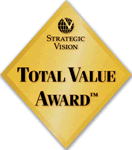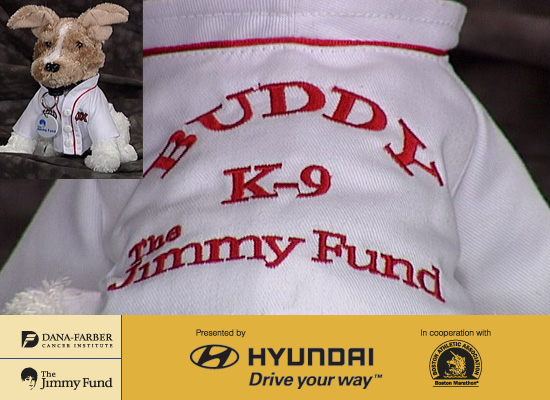Hyundai steps up battle of the small-car giants
Published December 10, 2006By: Jim Mateja
Chicago Tribune
You fight fire with fire or, in the case of automobiles, minis with minis.
That's what Hyundai of South Korea has done for 2007.
Now that the Honda Fit, Toyota Yaris and Nissan Versa have invaded the mini car segment that the Hyundai Accent plays in, Hyundai has raised the ante with a pair of new Accents: the GS and SE two-door hatchback companions to the GLS four-door sedan.
"We welcome Toyota, Nissan and Honda to this segment and trust that consumers will see the value and quality advantage that our continuous dedication to this segment provides," said Owen Koh, president and CEO of Hyundai Motor America.
That's a nice way of saying Hyundai considers Toyota, Honda and Nissan carpetbaggers in a market segment the South Korean automaker has been in for years, though Toyota had been there with the Echo but dropped it and opted to focus on larger cars. It wasn't until a gallon of gas became more expensive than a bottle of designer water that the Japanese brought out new entries, or, like Toyota, came back into the segment.
Considering Toyota, Honda and Nissan typically attract more attention than Hyundai, the Korean company has a battle on its hands.
Having tested Fit, Yaris and Versa, we turned to the new Accent hatchback offered in GS and SE version. We tested the SE, which is about 2 inches longer and half an inch wider than a Honda Fit.
Nice styling touches include body-color grille, sideview mirrors and door handles along with a spoiler.
Small, yes, snug, no. But it would be wise for driver and passenger to stow their parkas in back to keep claustrophobia from setting in.
There's decent room in the back seat, providing you can get into it. It requires sliding the front seat forward and taking a really deeeeep breath.
Cargo room behind the seat is more than ample. A parcel shelf strapped to the hatchlid hides whatever is stowed beneath. Need more room? The second-row seat bottoms slip forward and lift up against the front seats and then the backs fold flat.
The cloth seats are well cushioned and supportive for the short commute or long trip. But the driver's seat is bowed like the letter "C." Unless you don't mind driving with your chin on your chest, you have to recline the back a little to snap your spine back into a natural position. It's best to also raise the headrest a tad to keep it from digging into your neck.
Keep in mind this isn't a family car. It's more of a low-cost, high-mileage commuter.
There were times when Hyundai was serving its apprenticeship in the U.S. that you could slam door or hood and listen to the metal twang and watch it shimmy. No more. Small, yes, but very solid.
The 1.6-liter, 110-horsepower 4-cylinder shows more than a little spirit taking off from the light and merging into traffic on the expressway.
Good spunk in an engine that boasts 32 m.p.g. city and 35 highway. With its 12-gallon tank, it could easily deliver a week's worth of commuting or a weekend's worth of cavorting before having to refill.
What drives people to the mini segment is gas prices, so 32/35 is a lure. Putting more time and distance between refills tends to not only lower fuel bills but also divert attention from the commotion upon acceleration.
The SE comes with a sports-tuned suspension complemented by 16-inch radials (14 inch on the GS). Good road-holding ability from a sporty little hatchback thanks to stiffer spring rates, larger stabilizer bars, larger radials and low-effort steering response versus the GS.
At higher speeds, however, the agility borders on light footed on twisty pavement, perhaps because those 16-inch radials are narrow profile.
There's also standard side-impact air bags as well as side-curtain bags. Data from the Insurance Institute for Highway Safety shows that vehicles with the seat-mounted side bags and head-protecting curtains have 45 percent fewer fatalities in side impacts.
Though the car's small, it packs a number of storage areas, including the front center console, driver storage tray, storage pockets in the front doors and a rear storage tray. There's also the required dual cupholders and a pair of 12-volt power outlets.
The Accent SE starts at $13,915, the GS at $10,415. Standard equipment includes air conditioning, power windows/door locks/(heated) mirrors, remote keyless entry, rear-window wiper/defroster, illuminated vanity mirrors, AM/FM/CD audio system with six speakers and four-wheel disc brakes with anti-lock.
The SE also comes with a five-year/60,000-mile bumper-to-bumper warranty and a 10-year/100,000-mile powertrain warranty. In addition, Accent buyers receive 24-hour roadside assistance at no extra cost for five years. That includes emergency towing, lockout service and limited coverage for trip-interruption expenses. There's no deductible.
Only option on the test car was floor mats at $85. Missing was a power sunroof, which comes only with an audio upgrade at $1,250. If you prefer automatic, add $1,000.
Dealers also offer a number of accessories, from an MP3 player and iPod adapter to a plastic ground-effects package.
What you can't get, however, is a navigation system, not in a $13,000 hatchback aimed at attracting those on a budget.
Accent sales topped 41,000 units in the 2005 calendar year, but should fall a few thousand short of that this year, according to Hyundai spokesman Chris Hosford.
"There was a lengthy strike in South Korea this summer, and we aren't getting as many Accents as dealers want," he said.
Not to mention competitors Fit, Yaris and Versa.
"Sure they are having some effect, but they also are calling more attention to the mini segment," Hosford said.
Even more when gas prices skyrocket again--and they will.

 Drawing date: May 26th at the Longmeadow Baseball Field. Need not be present to win. No prize substitutions. Taxes and fees are the sole responsibility of the winner.
A minimum of 300 tickets must be sold or all funds will be returned. A maximum of 500 tickets will be sold.
Car courtesy of Gary Rome Hyundai. To purchase a ticket, contact Bob Michael at 565-2586. For information on the car, log onto GaryRomeHyundai.com
Drawing date: May 26th at the Longmeadow Baseball Field. Need not be present to win. No prize substitutions. Taxes and fees are the sole responsibility of the winner.
A minimum of 300 tickets must be sold or all funds will be returned. A maximum of 500 tickets will be sold.
Car courtesy of Gary Rome Hyundai. To purchase a ticket, contact Bob Michael at 565-2586. For information on the car, log onto GaryRomeHyundai.com





